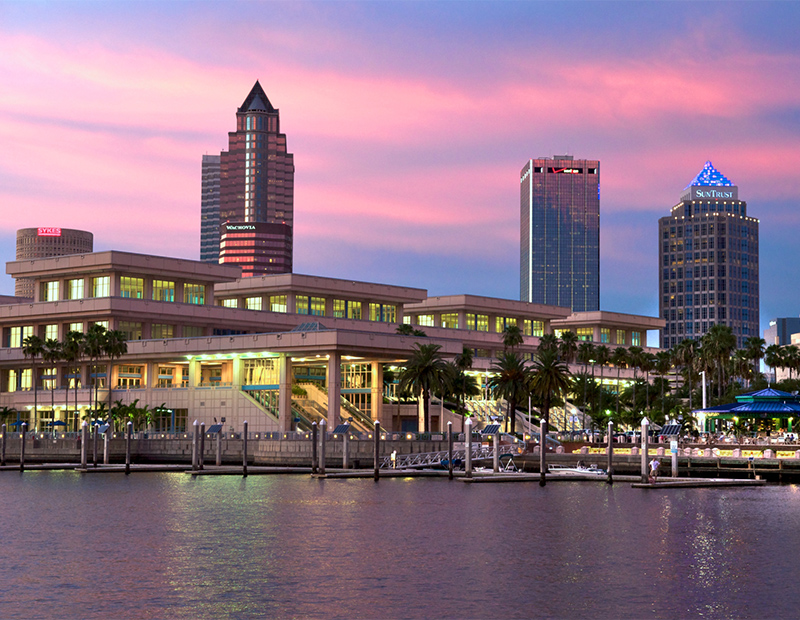CBRE Takes Pulse of Southeastern US CRE
A CBRE update on 18 key cities highlights the prospects for the region’s office, multifamily, retail and industrial sectors.
The commercial real estate market in the Southeast U.S. is faring well in the current cycle, according to CBRE’s 2019 Southeast U.S. Outlook. The region isn’t home to a bevy of top-tier markets, but it is home of fundamentals that are creating the perfect storm for success.
CBRE surveyed conditions in 18 southeastern cities, including Atlanta, Tampa, Fla., Nashville, Tenn., Raleigh-Durham, N.C., and Charlotte, N.C. The Southeast’s solid labor market and strong drivers—including tourism, technology, manufacturing and logistics—are buoying the region’s commercial real estate sector.
Office weathers change
In the office sector, asking rates continue to reach record highs, even as absorption makes a move in the opposite direction. Absorption had outpaced deliveries since the recession, but the tide turned in 2018 and deliveries took a small lead. However, equilibrium may be in the forecast, as high construction costs will play a role in keeping new deliveries from taking too much of a lead, as will the caution of developers, who are keeping close watch on preleasing trends.
Regardless of any changes, investors remain keen on the office sector in the Southeast. “Investors are attracted to the strong demographic growth in the region, especially in the larger markets in the region like Atlanta and Nashville. Interestingly, the markets most attractive to investors are also the ones where absorption has not kept pace with the delivery of new product,” according to the report.
Reveling in retail
The numbers indicate that retail in the Southeast, unlike some other areas of the country, is in a very good place. Vacancies have dropped to a historic low and asking rates have reached a record high. The desirable fundamentals can be attributed to strong economic growth, which will likely persist given the large pool of talent migrating to the region for its affordability, quality of life and economic opportunities.
The positive state of the Southeast’s retail sector is unlikely to be altered as a result of construction activity. New developments are predominantly urban retail and suburban grocery-anchored projects, both of which have gone unscathed by e-commerce for the most part. CBRE expects the ongoing influx of talent to continue to support retail’s success.
Industrial still booming
The industrial sector is having a good run in the Southeast. Manufacturing, logistics and consumer markets are in growth mode, spurred by global demand, e-commerce and population expansion. Absorption has overtaken or kept pace with deliveries since 2013 and as a result, developers have produced a level of speculative projects never before seen in the region.
The forecast for the industrial sector in the Southeast is just as rosy as its current condition, and the prediction is not just based on the unabated consumer growth in the region. “The industrial markets in the region are tied to trends in global trade. Manufacturers and logistics operators are poised to see significant growth in the future, barring a major global trade disruption,” according to the report. “The expectation is for all three types of industrial markets to see elevated growth in the next two years.”
Multifamily stays strong
Decades of solid demographic growth continue to support the multifamily sector in the Southeast. However, the vacancy rate, though still at an enviable figure in the mid-7 percent range, has been inching upward as deliveries take a minor lead over absorption. No sector can claim perfect conditions across the board. Factors specific to markets and even certain submarkets—including income dynamics—could place downward pressure on rent growth in the region.
Regardless of any potential pitfalls, investors can’t seem to get enough of multifamily in the Southeast. According to the report, “Institutional and REITs are especially fond of the sector, having increased their annual investment in the region by more than 30 percent from pre-recession levels.”
Across the sectors, the general forecast for the Southeast is bright. “Every primary economic driver in the region: in-migration, tourism, technology, manufacturing and logistics; are all trending in a positive direction,” according to the report.
Image courtesy of Visit Tampa Bay








You must be logged in to post a comment.